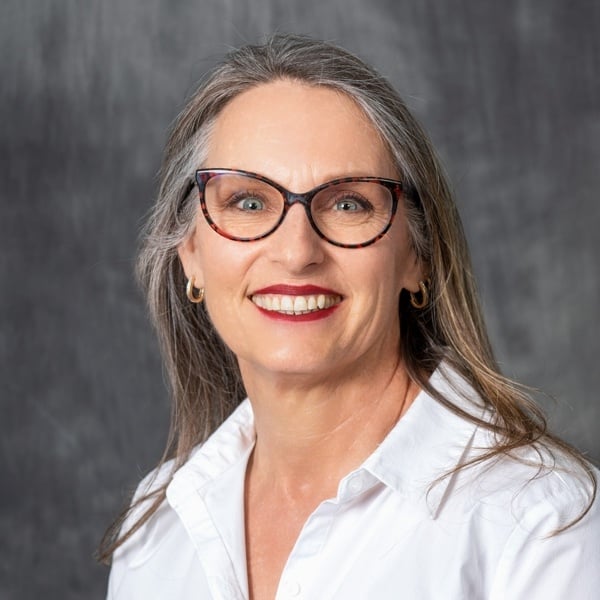You have /5 articles left.
Sign up for a free account or log in.
In a recent post, I asked you to think with me about higher education’s next 35 years. The method I suggested for this exercise is to think about the university of 1990. If we can track how much things have changed between then and now, perhaps we can begin to forecast where higher education will be in 2060.
Deb Dougherty, a professor (chair) and director of the Andison Center for Teaching Excellence at Alma College, took me up on this challenge. I asked Deb if she’d be willing to move our email conversation to this space, and she graciously agreed.
Q: Deb, before discussing higher education’s past and future, I’d like to hear a little about your present. Tell us about your current roles at Alma College.

A: Like many senior faculty members at small liberal arts colleges, I wear a lot of hats. I’m a professor of Spanish, the chair of the World Languages and Cultures Department and acting chair of Religious Studies, Philosophy and Sociology. I am also the director of the Andison Center for Teaching Excellence, overseeing new faculty orientation and mentoring and providing opportunities and support for faculty exploring new pedagogies and innovative teaching practices.
Q: Thanks for providing that context. OK, let’s go back to 1990. What were you doing in relation to higher education around that year? What big differences do you think exist when comparing the university of 1990 to that of today?
A: I was a graduate student working on my Ph.D. at Michigan State University. I had been a teaching assistant since beginning my master’s program and was teaching two sections of beginning or intermediate-level language courses while completing my own coursework in Spanish literature.
In those days, we did not yet have access to email or the web. I remember doing research in the library by looking through the yearly index of the MLA, hand-writing the bibliographic reference, then trudging up several flights of stairs to find the bound copy of the periodical, carrying it down several flights of different stairs to the copy center and copying the text if it turned out to be a valuable source. The downside of the process is obvious, but I do miss the serendipitous sources that invariably turned up while searching.
Back then, lower-level language courses met five days a week, and for homework, students listened to cassette tapes and recorded their homework in paper workbooks (often in a language lab). I would have given anything, both as a student and a teacher, for the access we have to authentic multimedia resources available today. It seems paradoxical that today, [of] the technologies that we were told would make our work efficient and free us to spend more time on things that matter, the opposite appears to be true. We lost five-day-a-week classes two decades ago because they complicated a scheduling system that prioritized MWF, 60-minute and T/Th 90-minute schedules. Over the years, a fourth hour, at first scheduled as a weekly conversation and practice session, has dwindled to a 15-minute, one-on-one guided conversation every other week, and I can see the end of that on the horizon.
Students’ priorities now mean that three hours of class time each week and on-the-go, online homework seem too much to ask. That’s not a dig at “this generation.” I worry about the schedules and priorities that contemporary society, the cost of higher education and the diminished prospects that an increasingly inequitable economy impose on students today.
When I began my graduate work in the late 1980s, I suspect my perception of academe as a whole was very naïve, but I don’t remember my professors railing against the corporatization of the academy. Of course, we were at an R-1 institution, and perhaps we were inclined to expect a certain level of bureaucracy at such a place, but over my past 28 years at a small liberal arts college, I have seen the administrative sector grow exponentially while enrollment and faculty numbers have remained roughly the same. And unfortunately, an increasing amount of faculty time is spent on administrative tasks.
Lastly, even as a first-generation student with degrees in the humanities, [I] never worried that I would not find fulfilling work that would support a middle-class life. Today, I spend a lot of time talking with prospective students and their parents about the professional utility and skills the study of a second language offers than I do about the enduring questions and responses across the ages that literary, historical and cultural studies provide.
Q: Now that you’ve thought about how higher education has changed over the past three-plus decades, do you have any thoughts (or speculations) about where we might end up 35 years from now? To get specific, when you imagine Alma College in 2060, what do you see?
A: I really hope the residential liberal arts model will survive the next 35 years and not just for a privileged few. After all these years, I still love my job and working with students every day.
I hope in 30 years they will look back on their experiences in higher ed with the same nostalgia and gratitude I do, and also that they are flexible enough to adapt and thrive in what will undoubtedly be a very different educational landscape.




